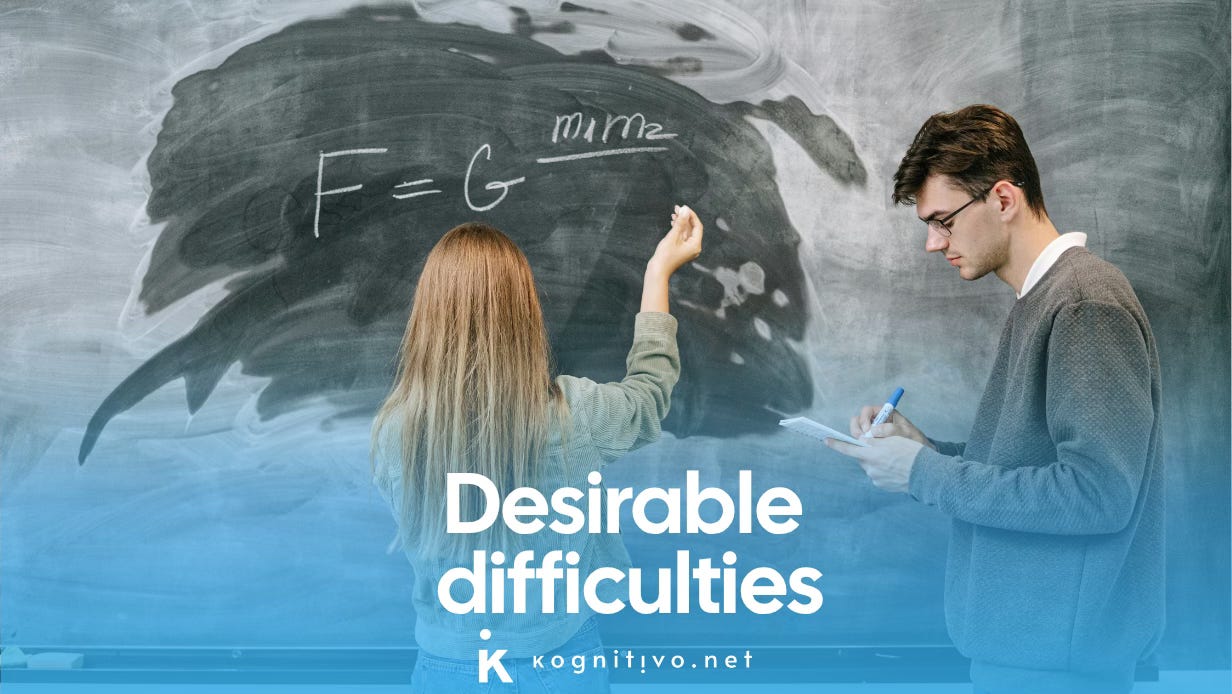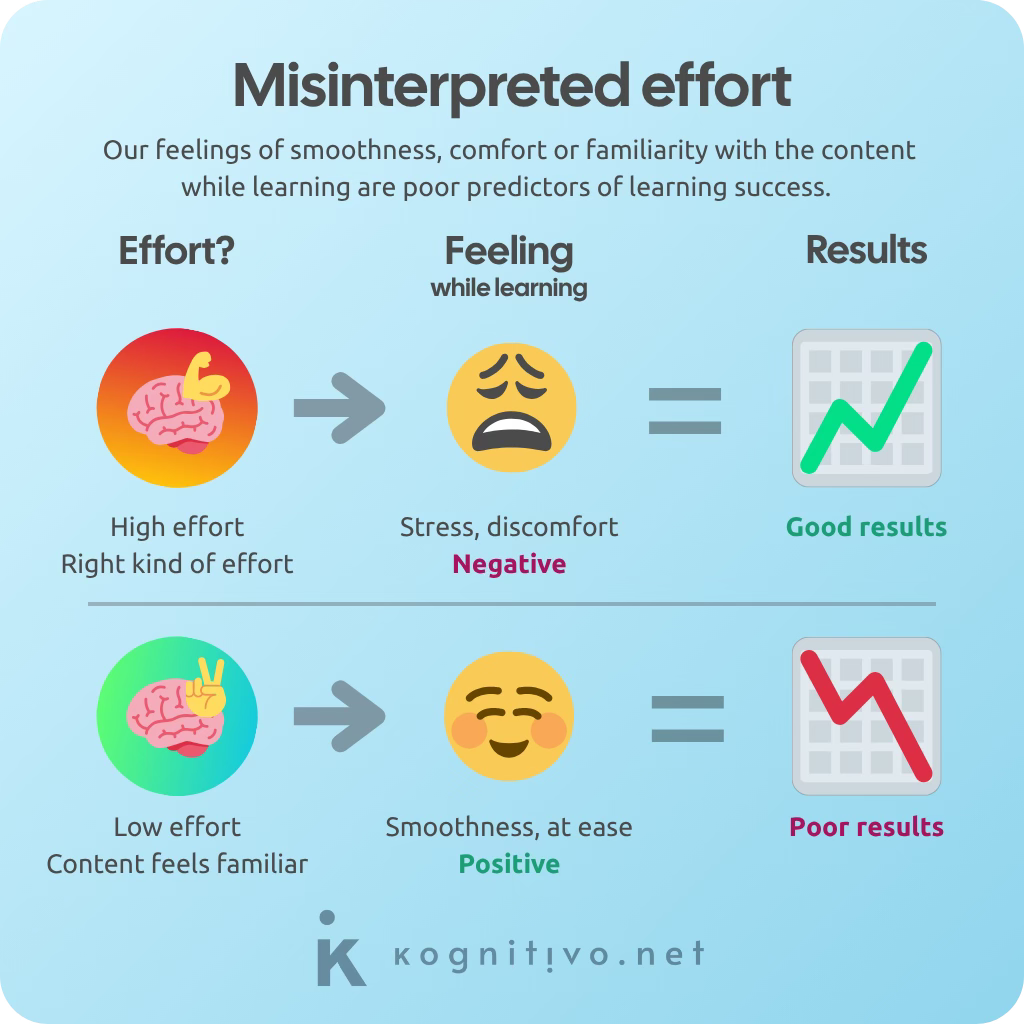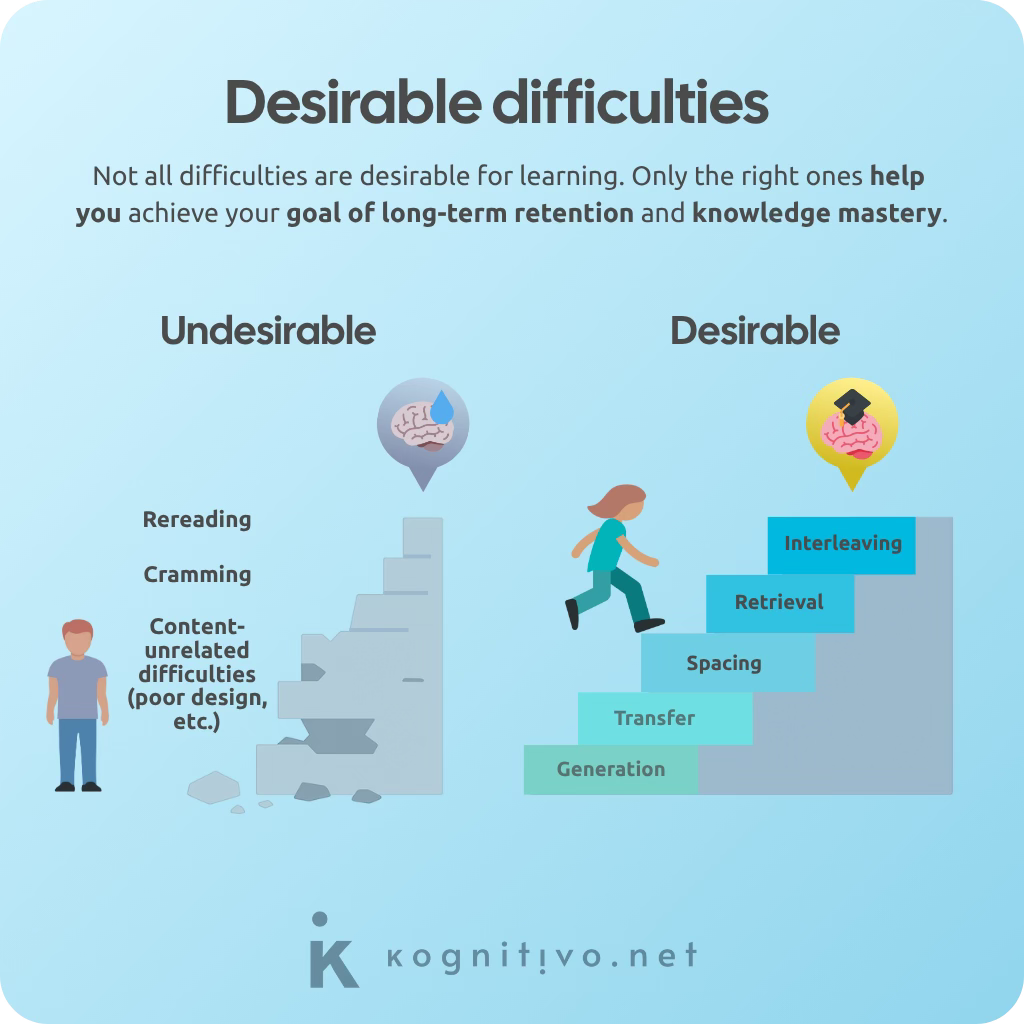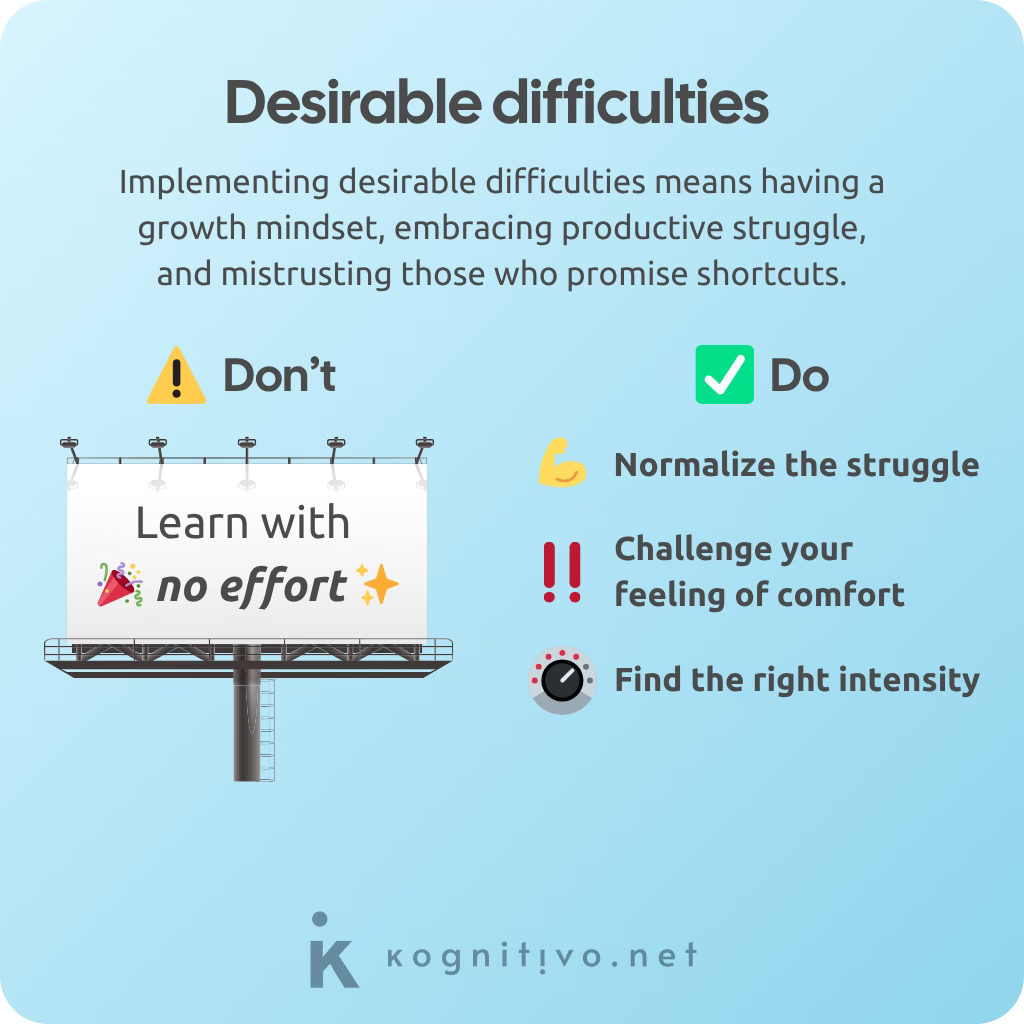No pain, no brain: the learning science of desirable difficulties
Effortless learning isn't learning. Real expertise needs the right kind of struggle: what cognitive scientists call “desirable difficulties.” Learn how to apply them.
We humans are terrible at assessing how well we’re learning. If learning feels smooth, we think it must be working. If it feels hard, we think we must be doing something wrong. We perceive effort as poor learning.
Cognitive scientists call this the misinterpreted effort hypothesis. You probably remember the illusion of fluency and the recognition trap: these happen when we mistake familiarity for true understanding. Like when you think you know a song’s lyrics... until karaoke exposes your lies. These are different manifestations of the same illusion.
Feelings such as familiarity, fluency or smoothness are very unreliable indicators of the efficacy of our learning strategies, but we still rely on them heavily.
In reality, mental effort is what produces learning. But not just any effort. The kind we need has a name: desirable difficulties.
What are desirable difficulties?
Desirable difficulties are learning conditions that make you struggle in the short term but help you remember and apply knowledge later. It’s an actual concept from educational psychology: Robert Bjork coined the term to describe challenges that look inefficient but lead to stronger memory and deeper understanding.
But wait, we need to talk. How can a difficulty be desirable? Isn’t this a contradiction? Indeed, the difficulty must engage attention, force the brain to make connections and stay within reach.
You could still ask: yeah, but why is effort necessary for learning? The reason lies in how memory works. Craik and Lockhart's Levels of Processing framework shows that deeper, semantic processing leads to stronger memory than shallow exposure. The brain has limited resources: it prioritizes what seems meaningful. Struggle is a signal: when something feels challenging, the brain tags it as important and kicks learning into gear. Desirable difficulties create just enough friction to trigger that response.
What counts as a desirable difficulty?
Let’s be clear: this isn’t about glorifying pain or being a masochist (although…). If you’re investing a lot of effort into learning, but it’s not the right kind of effort, your difficulty is not desirable.
For example: arranging your desk, color-coding your flashcards or having your eyes fly over the words of a textbook on autopilot. You might be putting in a lot of effort (=difficulties), but it’s not the kind that will improve your memory (=not desirable).
To tell apart which difficulties are indeed desirable, you shouldn’t just look at the kind of activity you’re doing (reading, writing, summarizing, etc.). Instead, you should focus on what’s going on in your brain while you do those activities.
Desirable difficulties are about creating learning conditions that force your brain to work in the right ways. They’re about getting out of “autopilot mode” and making sure your brain is actively engaged.
If your brain is actively engaged (retrieving, connecting, predicting, restructuring), a passive-looking activity like reading can actually be more effective than a flashy one like drawing mind maps or writing summaries on autopilot.
In a previous article, we talked about the different types of cognitive load or mental effort. Indeed, Cognitive Load Theory helps here. Desirable difficulties increase germane load (effort spent on learning) while avoiding extraneous load (effort wasted on confusion or bad design).
Give me some examples
If you follow Kognitivo, you know what we’re talking about. Remember how retrieval practice, spaced repetition and interleaving work precisely because they require effort, not despite it? These three are classic examples of desirable difficulties. But there are other learning strategies that are widely accepted to be desirable difficulties:
Generation: Trying to come up with an answer before seeing it improves memory, even if you're wrong.
Delayed feedback: Feedback is more powerful when you wait, because your brain must reconstruct what you learned.
Transfer: Practicing skills in different formats or contexts boosts flexibility.
Everyday applications: how to make learning usefully harder
Desirable difficulties teach us to trust the process, not the feeling. Here are some thoughts to help you master them:
Normalize the struggle: train your brain to seek the right kind of difficulty, the one that hurts so good. Avoid the reflex of “ohh, this is getting hard, it must mean I'm doing it wrong.” Learn to sit with the discomfort.
Challenge yourself constantly: don’t trust the feeling of comfort. If it’s getting too easy, you should get a warning signal in your brain. Get used to turning easy tasks into productive ones: try to predict answers, delay feedback, etc.
Find the intensity that works for you, but don’t overdo it: your study routine should be sustainable long-term. Overdoing it for some days and then being burned out won’t help you. Next week’s article will be precisely about this!
But I thought it was about making it easier…
It’s hard to accept, but it’s true. There’s no such thing as zero-effort learning. We keep dreaming of one day being able to swallow a pill or plug in a memory card and then, all of a sudden, we know everything about microbiology, speak Korean and can build microprocessors. But these ideas are contradictory in nature.
You can’t have knowledge and expertise without the struggle that leads you there, because that effort in overcoming a cognitive struggle is learning.
The promise of “effortless learning” is a popular marketing fantasy that education products keep coming back to. “Learn Chemistry in your sleep.” “Master a language by playing a game five minutes a day.” These claims fundamentally misunderstand what learning is all about. That’s propaganda I’m not falling for.
This also has great implications on the right use of AI in education and its main purpose: a good implementation of AI for learning isn’t the one that makes everything easier, but the one that supports you in setting up the right kind of cognitive struggle for you to learn best. That is, the use of AI that gets rid of undesirable difficulties (makes learning more convenient), but gives you the desirable ones (makes learning efficient). We’ll explore that more in a future article.
By the way, do you know what’s something that’s desirable, but not a difficulty? Subscribing!
Keep learning
Nerd out with your favorite AI-chatbot
Prompt suggestions. Always ask follow-up questions
Act as a teacher and test me on “desirable difficulties” using retrieval practice. Ask me 7 questions, one at a time, only proceeding when I answer each one. Make the questions progressively harder.
I’m going to be honest: after reading an article on “desirable difficulties”, I still believe that an ideal learning experience should always be easy, like a game. But I’m happy to discuss that. I’ll give you my reasons, please reply specifically to them and add sources to back up your replies.
Can you help me redesign a personal study routine or training plan to include at least three types of desirable difficulties?
Links
📄 Memory and metamemory considerations in the training of human beings: In this paper from 1994, Robert Bjork coined the term “desirable difficulty”. The text is very accessible even today and goes into a lot of juicy detail.
⏯️ Using desirable difficulties to enhance learning, Dr. Robert Bjork: Here’s a video where you can listen to Robert Bjork talk about desirable difficulties and go into detail about the ideas you learned in this article.







“Learning isn’t always fun” Alphonso Dunn